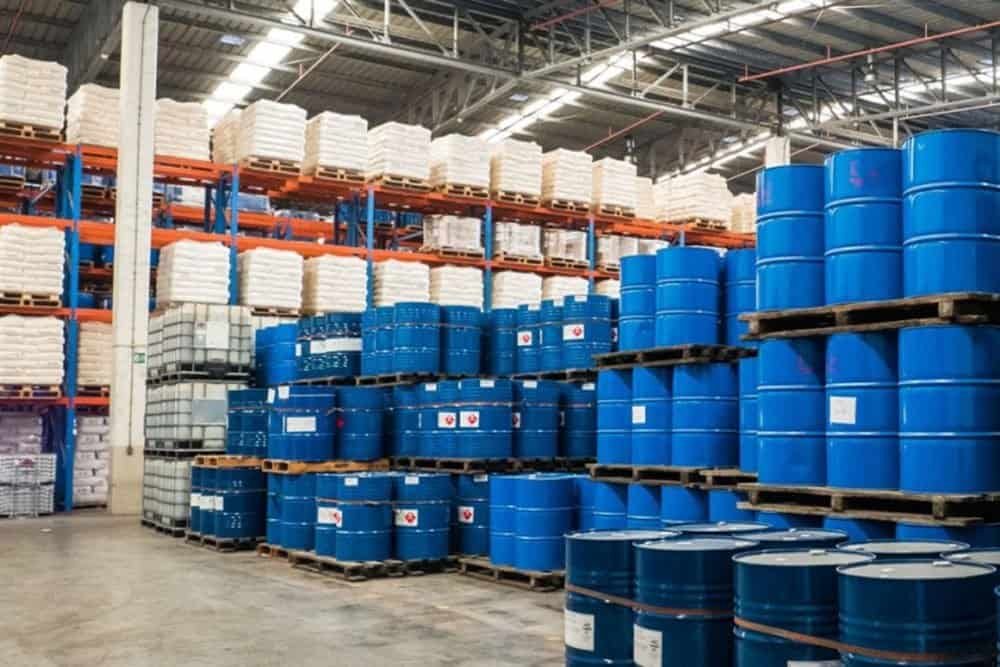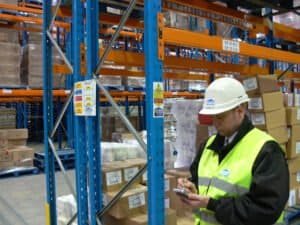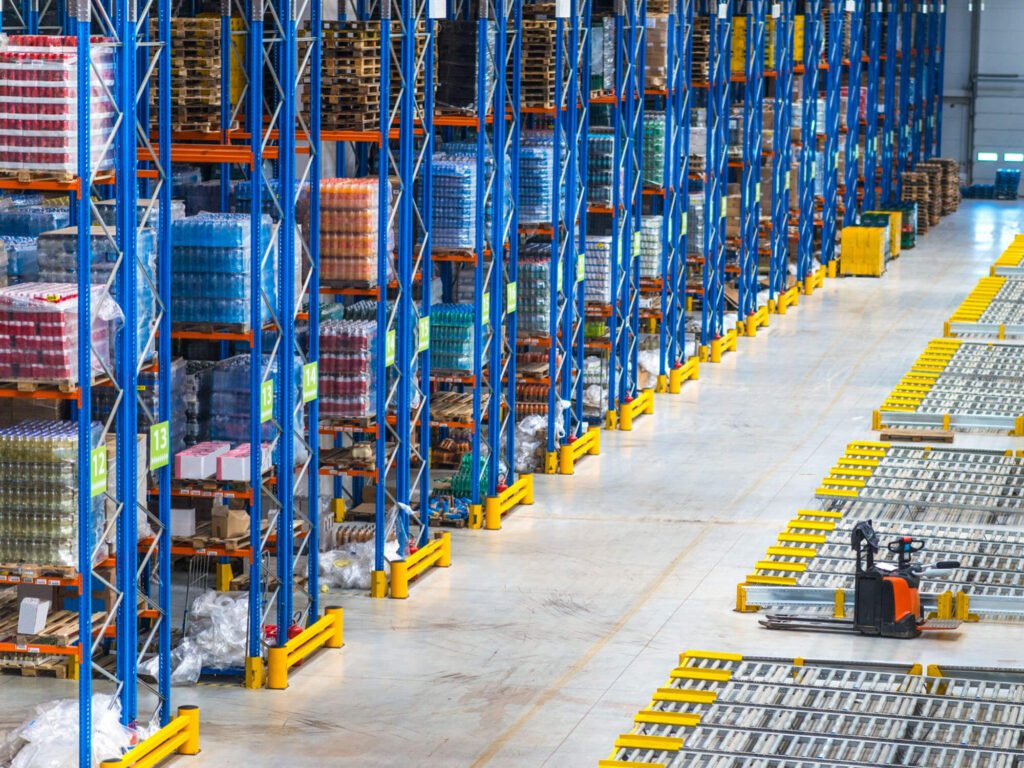Chemical processing is always a risky task because it requires safe handling. Similarly, chemical storage is also a bit challenging and requires some safety protocols. Developing a system of appropriate storage, with relevant training for employees and an emergency plan in place is very important for a chemical storage warehouse.
This guide below features a detailed explanation of the concept of understanding the chemical storage significance and its safety guidelines. Let’s explore and learn some safety tips for chemical storage.
Understanding Chemical Warehousing
Chemical warehousing is the process of storing chemicals in a controlled environment to ensure that they stay effective, stable, and safe. The storage of chemicals must be carried out in a very special type of warehouse which is designed to ensure that chemicals are stored in a very safe way unless they are put to use for manufacturing or other relevant purposes.
There are different types of chemicals and based on their reactivity and type their storage process is designed. Some chemicals are flammable like acids, fuels, pesticides, etc and they need a different storage process that keeps them safe and fresh in the longer run. Along With their safety, their reactivity maintenance is also very important for them to be functional when used for preparing products.
There are different types of risks which are associated with chemicals and some of these are as follows:
- Fire hazards
Chemical storage poses one of the significant risks which is the risk of fire and it is commonly due to the presence of flammable chemicals which comprise fuels and solvents that are highly combustible. These chemicals can lead to explosions and hence require appropriate measures of safety like temperature control, and fire suppression systems which help to mitigate the risk.
- Contamination Risk
Contamination is also a concern when it comes to chemical warehouses and it happens mostly due to the lack of compatibility when the chemicals are stored together. It leads to chemical degradation and causes health risks. To prevent these issues robust practices of storage are important.
- Environmental Impact
Chemical storage is also associated with the environmental impact as chemicals require proper disposal. In case the chemical leaks or spills it causes various fumes to be released and results to cause impact on the environment.
Chemical Storage Guidelines
Some important chemical storage guidelines for the storage of the chemicals are required to be followed and these are given below:
Segregation of Chemicals:
Incompatible chemicals are required to be kept segregated so that no dangerous reactions tend to take place. Chemicals have the potential to interact with each other and this may cause fire incidents, toxic fumes, and explosions. Hence to avoid these risks the chemicals that have a chance of reacting must be kept segregated so that the storage facility offers safety.
Some of the chemicals that have a chance to react and require segregation are acids and bases, oxidizers and flammables, and water and water-reactive chemicals.
Proper Labeling and Documentation:
Labeling of chemicals is also a very important requirement to prevent accidents during storage. Labels of necessary information and help identification of chemicals so that the users can safely handle them.
The documentation of a chemical storage warehouse should be up to date so that the safety data and location of the chemicals are clear and in case of an emergency, immediate response is possible.
Temperature and Humidity Control:
Environmental conditions like humidity and temperature are also factors that may impact the stability of chemicals. The high temperature leads to a chemical reaction and an increase in their reactivity also low temperatures cause the chemicals to solidify.
It is very important to maintain the right storage conditions and climate-controlled environments must be ensured in spaces where chemicals are kept to maintain their stability.
Ventilation Requirements:
Ventilation is very important in chemical storage warehouses so that the toxic fumes do not accumulate as they can cause risk for the workers and also the storage facilities. Ventilation systems are also installed in the warehouse to ensure adequate airflow.
Handling and Spill Management:
Chemical handling should be done by using proper protective equipment like aprons, goggles, and gloves. Workers also should be trained to handle the chemicals properly and should be aware of emergency procedures. In case of a spill, the area must be evacuated immediately and use of absorbent materials should be in place to avoid the spreading of chemicals.
Chemical Storage Warehouse Requirements
Some of the chemical storage warehouse requirements are suggested below as they help create a safe and risk-free chemical storage warehouse.
Regulatory Compliance:
OSHA chemical storage requirements provide guidelines for the warehouse where the chemicals are stored. These regulations help protect people and the environment from hazardous chemicals.
Workers are advised to avoid and stay aware of unsafe practices like improper handling and transporting of chemicals as these hazardous chemicals may cause health and safety risks.
According to the OSHA guidelines employees must be provided with appropriate training sessions and plans in writing to work with chemicals. The chemicals should also have a safety data sheet which should be kept readily available at all times.
Moreover, the chemical storage areas must be free from explosives, clutter, and flammable situations. Also, the chemical storage conditions must be free from pests and rats. The chemical placement should be 6 feet away from hoistways and 10 feet away from exterior walls.
Bunded Floors:
Spill control is a very crucial concern when it comes to storing chemicals, the burn and spill decks can be incorporated to capture the chemical spills and keep the site safe. The plastic spill decks support chemical containers and machinery and at the same time hold the chemical spills.
Designating a Chemical Transfers Area:
The process of transferring chemicals is always the riskiest part and most of the incidents take place during the transferring process. Hence, all the new chemicals need to have their containers examined along with a safety data sheet when they come to the warehouse. A specific area must be designated for the transferring process and such area must have a bunded flooring for managing spills and leaks.
Chemical Storage Classifications:
Chemical classification makes the storage process safe. It helps to ensure that chemicals that are not compatible are segregated from each other and are kept in different sections with appropriate safety measures implemented. Such safety measures consist of regulating the temperature of that area, implementing plastic shelves for such chemicals and preventing cross-contamination.
Chemical Safety Protection:
By law, every chemical storage warehouse should have first aid equipment and an emergency response system at all times. Employees must be trained on using the equipment and the equipment must also have a PPE and spill kit for the employees working in that warehouse.
Measures like fire dampening and emergency eyewashes and showers are very important for such spaces and proper timely testing of these measures is also important. An emergency exit and evacuation plan should also be maintained.
Limit the Operation of Machinery:
Chemical storage warehouses may require forklifts and other types of machinery to be operated and with the presence of such machinery, there is a high chance of incidents. It is very important to ensure that such equipment should be operated by highly trained staff and certified drivers only.
Fire Safety Measures:
Storage areas for chemicals must be fire-resistant and therefore they are constructed with materials that can withstand high temperatures and the spreading of fire. These areas help to reduce overall damages in case of any fire incident and also comprise containers and shelving which offer fire resistance.
Also, the chemical storage warehouse must have fire suppression systems in place so that fire can be extinguished and controlled in time. Such facilities must be inspected regularly and the fire suppression systems should be regularly checked.
Access Control and Security:
Chemical storage areas must have restricted access and unauthorized personnel must not be allowed to enter. The entry of such people can be limited by installing biometric scanners, key cards, and security codes. Such prevention is very important to ensure safety as unauthorized access may lead to the misuse of chemicals, theft, or accidents.
Emergency Preparedness:
In order to mitigate accidents, an emergency response plan is very important. Such a plan must have procedures that can be implemented in case of spills, fires, and leaks. The responsibilities of staff, protocols, and evacuation routes are required to be specified and followed by employees to report and deal with such incidents.
Regular training of staff to deal with such an emergency is also important and the right equipment should be put to use. Conducting regular drills to train staff helps prepare them for such situations.
Chemical Warehouse Design Considerations
The chemical storage warehouse should be designed in a way that offers safety measures and some of these considerations in the design are given below:
Layout and Space Utilization:
The chemical warehouse design must be equipped with maximization of space and it should focus on having organized and clear pathways. The chemicals of different types must be kept segregated and a logical flow of receiving, storing, and shipping chemicals should be in place. The design must also support scalability so that in the future if any expansion is needed it can be carried out.
Storage Equipment and Shelving:
Shelving and storage selected for the chemical warehouse should be efficient like adjustable racks offer flexibility, and materials like stainless steel can be used for chemical storage as they are corrosion resistant. Lracking offers heavy-duty pallet racking systems which are made using heavy-duty materials and hence offer durability and corrosion resistance.
Lighting and Visibility:
Adequate lighting and visibility in chemical storage spaces are very important as they ensure operational efficiency as well as safety. The workers can easily look at the chemical labels and they can also navigate the warehouse in a safe way.
Environmental Controls:
Implementing a system that controls and monitors temperature, ventilation, and humidity is very important for the storage of chemicals. These systems help to protect chemicals from degrading and keep them stable. Also, the ventilation systems disperse the fumes in the warehouse and maintain the quality of air.
Best Practices for Safe Chemical Warehousing
In order to ensure safety in the chemical storage warehouse, there are some best practices to be followed, some of these are given below:
Staff Training and Education:
Staff training on handling chemicals, storing them, and following the emergency procedures is very important for their safety. The staff must be taught about safety measures and also must be educated about the potential hazards associated with the chemicals. It helps to keep them aware of the emergency response mechanism and helps avoid the risks of accidents.
Routine Inspections and Audits:
Chemical storage warehouse audits and inspections are also very important. These must be conducted regularly so that the potential hazards can be identified and addressed. Such inspections require focusing on compliance with safety regulations and ensuring that proper storage practices are in place. Records of inspections also should be kept and corrective action taken must be documented.
Continuous Improvement and Updates:
Keeping yourself updated on the changes in regulations and best practices of the industry is very important to maintain a safe chemical warehousing operation. The storage procedures and safety protocols must be updated regularly and ensured that they meet the regulatory requirements. Such a proactive approach helps to mitigate the risk of accidents and also enhances the efficiency and safety in the handling and storage of chemicals.
Conclusion
Selecting the right storage system which includes the appropriate racks and shelves for the chemical storage warehouse is extremely important. Lracking is one of the leading manufacturers of racking systems and shelves. You can get your hands on customized racking systems of storage for your chemicals which are designed keeping in mind the safety needed in such a warehouse.
Lracking ensures using the appropriate material for the manufacturing of racking systems for the chemical storage warehouse to ensure that potential risks are avoided. You can get in touch with us to get a quote today.




